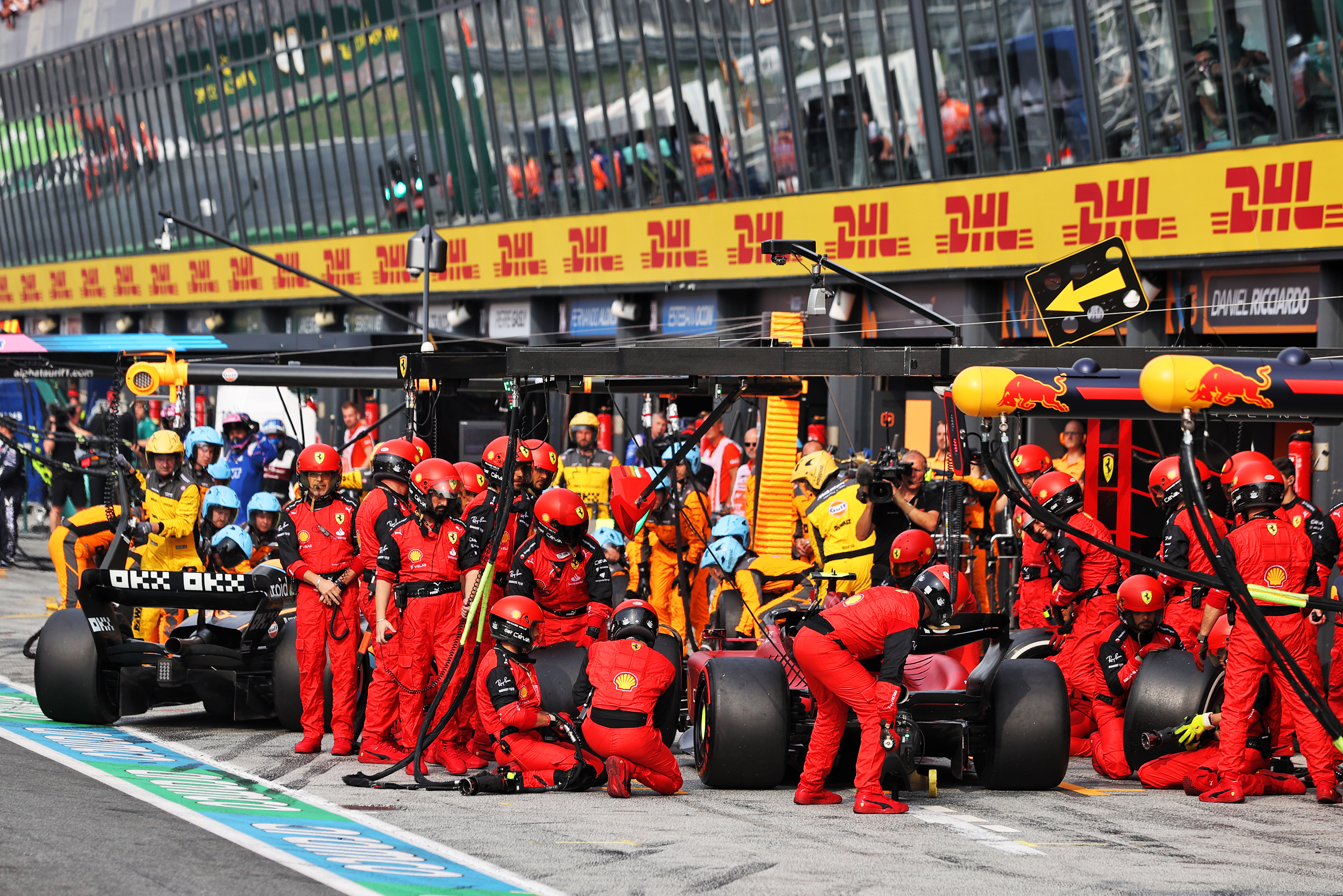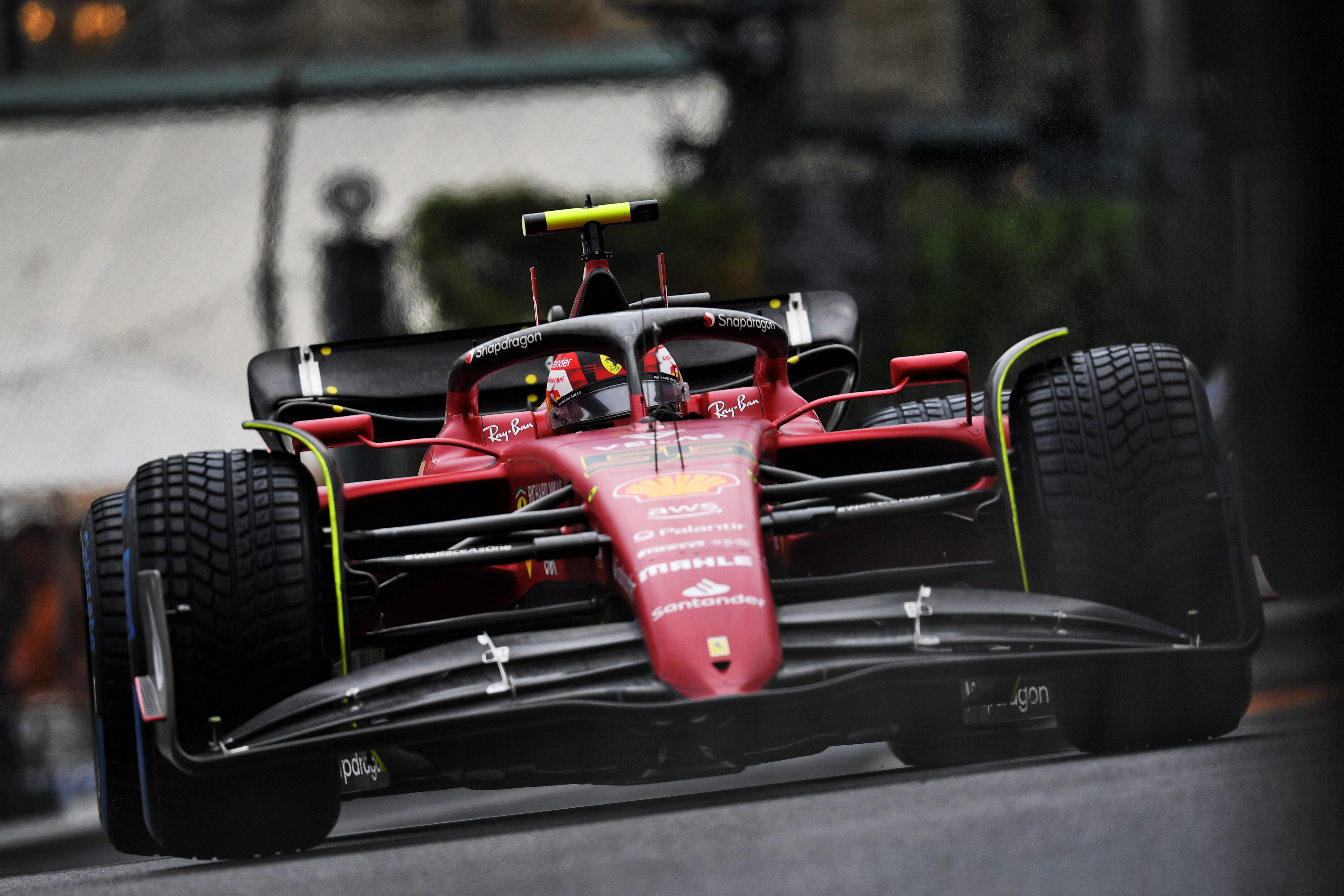Fifteen races out of 22 is a big enough sample set to judge who is making the most of the equipment they have and if any of Formula 1’s ‘big three’ teams should be doing better – and therefore might need to change the way they do things.
Looking at the performance ranking, based on each team’s fastest individual lap of the weekend, Ferrari has been quickest eight times out of 15; that’s 53% of the race weekends.
FASTEST TEAMS BY RACE WEEKEND
| Team | # times fastest | % times fastest |
| Ferrari | 8 | 53% |
| Red Bull | 6 | 40% |
| Mercedes | 1 | 7% |
In the drivers’ championship, it’s a different story. If you can win on every weekend with fastest lap, you can score a maximum of 26 points x 15 which is 390 points available. Then you have to add the potential extra eight points for each of the two sprint weekends so far, making a maximum of 406.
DRIVERS – POINTS PERCENTAGE ACHIEVED
| Driver | Points | % of maximum |
| Verstappen | 310 | 76% |
| Leclerc | 201 | 50% |
| Perez | 201 | 50% |
| Russell | 188 | 46% |
| Sainz | 175 | 43% |
| Hamilton | 158 | 39% |
In the constructors’ championship, it’s a similar story with a maximum of 15 sets of 44 points for a 1-2 finish and fastest lap for a total of 660, plus the potential extra 15 points for a 1-2 in each of the two sprint races. So that’s a total of 690.
TEAMS – POINTS PERCENTAGE ACHIEVED
| Team | Points | % of maximum |
| Red Bull | 511 | 74% |
| Ferrari | 376 | 54% |
| Mercedes | 346 | 50% |
This makes it very clear that Ferrari has a quick car, but can’t convert that speed into points consistently on race day. That means the team needs to take a very close look at why that is and, in doing so, scrutinise itself.
There’s no point in telling yourself what the others are doing is miraculous because it isn’t. You can’t control what others do, but sure as eggs are eggs you can improve what you are doing and be as good as, if not better than, your rivals.
Honesty is the biggest thing when it comes to identifying and progressing the way you operate. I don’t feel that Ferrari is being honest with itself because, on too many occasions, I hear what I would call fairly lame excuses.
I’m not after Mattia Binotto’s job or calling for his scalp, but ever since he took over as team principal – having previously been technical director – I’ve said the job is too big for one person.
He built his reputation heading up the technical side of Ferrari and the change to incorporate that and the team principal role is very different and way too much. While the technical side has its own structure below him, it’s clear he’s still very involved on that side, so I blame the people who made that decision to put him in that position.
But now he has accepted it, or even sought it, and in that position he has to carry the can. To do that, he needs to open his eyes to what the rest of us see from the outside.

That’s not a flippant comment. When I was closely involved with running a team, I couldn’t always see the wood for the trees.
When you are closely involved, many times things fall into the grey areas. You can say, ‘if we had just done this or that everything would have been OK’. It’s a case of not rocking the boat, because you know that if you do then you have laid down the path to improvement and if you do that improvement is expected.
Stepping back a bit would allow you to take in so much more, so perhaps Binotto needs to do that and quickly, if Ferrari is to be a more credible championship contender in 2023.
Just taking Zandvoort, there were two pitstop problems for Carlos Sainz. His first stop cost over 10 seconds and Binotto’s excuse is that the call was made for Sainz to pit too late and that’s why the crew wasn’t ready.
That’s clearly rubbish, because the team had three tyres there ready to fit in plenty of time. The left-rear was missing, and missing for a long time, so something else caused that problem. The question is what and why? There will always be late calls for tyres and rightly so, but if there is a weakness in the system it could easily be costly again in the future.
Then there is the debate about releasing Sainz into Alonso’s path and the five-second time penalty he received. Yes, the pitlane at Zandvoort is short, but it’s short for everyone.

The team member that controls the car is responsible for that release simply because of safety. If a car is coming down the pitlane then you have to wait or suffer the consequences. And part of making that judgement is factoring in whether the car will be slow out of the box because the next pitbox is occupied.
As for Charles Leclerc, some of the questions Ferrari was asking him during the race about tyres and strategy just about sums it up. No-one on the pitwall is taking the lead on this decisively.
Sainz has shown on a couple of occasions that he is happy to take the lead on strategy calls, for example when he rejected pitting for intermediates at Monaco, but really it shouldn’t be like that. The driver only has his performance and the performance of the cars immediately in front of and behind him to judge what’s happening whereas the team has endless data on the car’s pace and that of the other 19 cars to make a decision. That’s a much larger set of data to make decisions on and really the driver should only be the deciding factor if it’s in judging, say, the grip levels in the wet.

I always say strategy is a living thing. You can lay down the big plan – or Plan A, B, C, D etc as we hear teams talking about – in the pre-race briefing but as we saw at Zandvoort that can quickly go out of the window.
At any point in time, the strategist’s main job is to be 100% ready for any eventuality to crop up. When things change, you don’t have time to scratch your head.
On each lap, as your car or cars pass the pit entry, you move onto ‘what would I do if X happens on this lap?’. You must have that decision prepared and then make sure the guys and girls responsible for carrying that out are fully aware of what it is before the car gets to the pit entrance at the end of the lap. Then the same procedure lap after lap until the chequered flag is thrown.
In my honest opinion, what we see is a culture that festers in Maranello. Instead of simply being honest with how to go about your business when something goes wrong, Ferrari seems to have to find a way to protect itself from responsibility.
On far too many occasions, Binotto has stated that Ferrari is just not fast enough. I would argue that the numbers above show that it is. Perhaps it’s at the wrong time of the weekend given we know Ferrari is strong in qualifying, but if you have a fast car it’s up to you as a team to make sure you make it work for the biggest pay days. And in F1, that’s race day.
If you don’t address each issue as it arises, you cannot get better and are doomed to repeat your failures. But to do that, you need to recognise the reasons and put in place a system and structure that will prevent it from happening again.
So in the case of Ferrari’s pitstops, the key questions are exactly why the left-rear wheel wasn’t ready, because it wasn’t simply a question of being too late, and why wasn’t the angle at which the car has to pull out of the box factored in for the management of the release?
Unfortunately, the fact that Ferrari is having so many problems, some of them repeated, suggests that there is an urgent need for those in the team to be honest with themselves if the team is to make the most of the pace of what is a very fast car.



